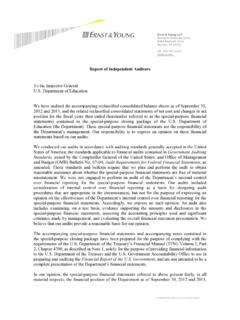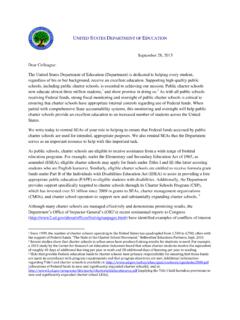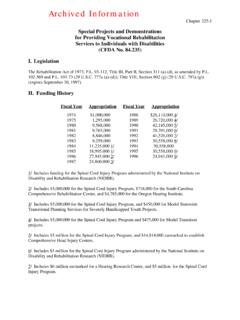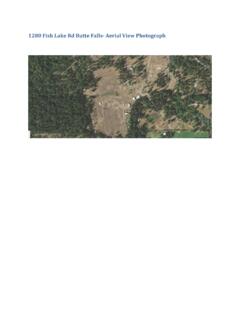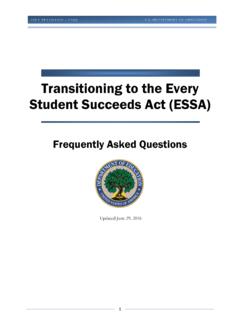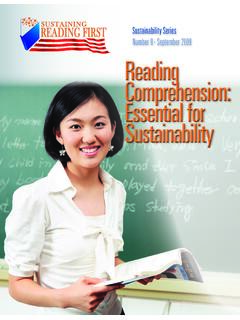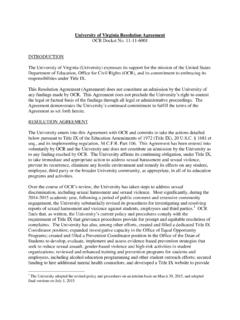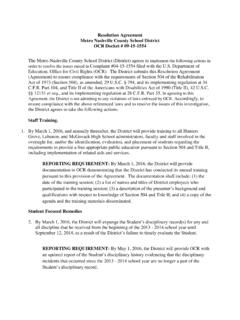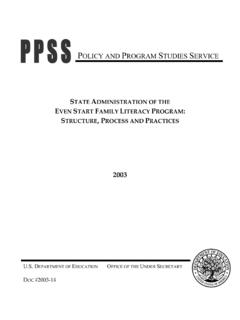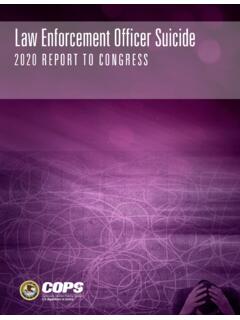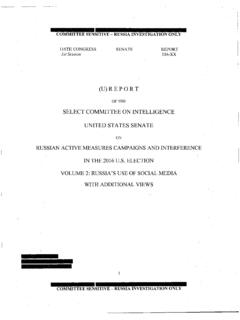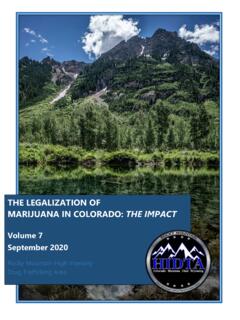Transcription of 2015-2016 Civil Rights Data Collection: School Climate and ...
1 1 NEW RELEASE FOR 2018 Department of Education Office for Civil Rights NEW RELEASE FOR 2018 2015 16 Civil Rights DATA COLLECTION School Climate AND SAFETY DATA HIGHLIGHTS ON School Climate AND SAFETY IN OUR NATION S PUBLIC SCHOOLS What's the 2015 16 Civil Rights Data Collection? The 2015 16 Civil Rights Data Collection (CRDC) is a survey of public schools and School districts in the United CRDC measures student access to courses, programs, staff, and resources that impact education equity and opportunity for students. The CRDC has long provided critical information used by the Department of Education s Office for Civil Rights in its enforcement and monitoring activities.
2 In addition, the CRDC is a valuable resource for other federal agencies, policymakers, researchers, educators, School officials, parents, students,and other members of the public who seek data on student equity and opportunity. To further explore the CRDC data through the use of data tools, please visit the CRDC Reporting Website at To download the CRDC data, visit Who s in the 2015 16 CRDC? Number of School districts: 17,337 Number of schools: 96,360 Total number of students: Million WHA T S INSIDE Serious 2 Law enforcement Referrals and School -Related 3 Harassment or 5 Restraint and 11 School Discipline.
3 13 Data Highlights and CRDC 17 More About the Data Collected for the First Time Serious 2 Firearm 2 School 2 Students with disabilities served under the Individuals with Disabilities Education Act (IDEA): 12% Students with disabilities served only under Section 504 of the Rehabilitation Act, as amended: 2% SOURCE: Department of Education, Office for Civil Rights , Civil Rights Data Collection, 2015 16. NationwidWhite 49% Black or African American 15% Hispanic orLatino of any race26% e Student Demographics: Race/Ethnicity:1 Asian 5% American Indian or Alaska Native 1% Two or more races 3% Native Hawaiian or Other Pacific Islander Boys: 51% Girls: 49% English Learners: 10% Students with Disabilities.
4 14% Department of Education | Office for Civil Rights | April 2018 - revised May 2019 2015 16 Civil Rights Data Collection | School Climate AND SAFETY 2 NEW RELEASE FOR 2018 NEW RELEASE FOR 2018 School Climate AND SAFETY School Climate generally refers to interrelated aspects of the quality and character of School life. This issue brief focuses on one element of School Climate : safety. To evaluate how safe students are at School , the CRDC collects data on serious offenses, law enforcement referrals and School -related arrests, harassment or bullying, restraint and seclusion, and School discipline. Serious Offenses Figure 1 shows the number of incidents of serious During the 2015 16 School year, nearly million incidentsof serious offenses were reported in public schools across the The categories of (a) physical attack or fight without a weapon, and (b) threats of physical attack without a weapon, accounted for 94 percent of all reported incidents of serious offenses.
5 About 787,200 (75 percent) incidents of physical attack or fight without a weapon, and about 197,900 (19 percent) incidents involving a threat of physical attack without a weapon were reported. School districts also reported approximately 22,600 (2 percent) incidents of robbery without a weapon, and 11,700 (1 percent) incidents of a physical attack or fight with a weapon. Each of the other offenses accounted for less than 1 percent of the total. FIGURE 1: Number of incidents of serious offenses Type of incident Number Physical attack or fight without a weapon 787,200 Threats of physical attack without a weapon 197,900 Robbery without a weapon 22,600 Physical attack or fight with a weapon 11,700 Threats of physical attack with a weapon 10,400 Sexual assault (other than rape)
6 9,300 Possession of a firearm or explosive device 5,900 Threats of physical attack with a firearm or explosive device 3,400 Physical attack or fight with a firearm or explosive device 2,800 Rape or attempted rape 400 Robbery with a weapon 620 Robbery with a firearm or explosive device 250 SOURCE: Department of Education, Office for Civil Rights , Civil Rights Data Collection, 2015 16. In addition to the foregoing incidents of serious offenses, for the first time, the CRDC required schools to report on School -related shootings and School -related homicides. Nearly 230 schools ( percent of all schools) reported at least 1 incident involving a School -related shooting, and over 100 schools ( percent of all schools) reported a School -related homicide involving a student, faculty member, or staff member.
7 About 1 out of every 100,000 students was enrolled in a School that reported a School -related shooting or School -related homicide during the 2015 16 School year. Note: The total number of School -related shootings or the total number of School -related homicides are not reported. The data reflect the number of schools that had at least one incident of a School -related shooting or School -related homicide. Department of Education | Office for Civil Rights | 3 NEW RELEASE FOR 2018 Law enforcement Referrals and School -Related Arrests Referral to law enforcement is an action by which a student is reported to any law enforcement agency or official, including a School police unit, for an incident that occurs on School grounds, during School -related events, or while taking School transportation.
8 School -related arrest refers to an arrest of a student for any activity conducted on School grounds, during off-campus School activities (including while taking School transportation), or due to a referral by any School All arrests are considered referrals to law enforcement . During the 2015 16 School year, over 290,600 students were referred to law enforcement agencies or TO LAW enforcement AND ARRESTS BY RACE AND SEX Figure 2 presents the percentage distribution of students FIGURE 2: Percentage distribution of students referred to law enforcement or subjected to School -related arrests, by race 0 20% 40% 60% 80% 100% American Indian or Alaska Native Hispanic or Latino of any race Asian Black or African American Native Hawaiian or Other Pacific Islander White Two or more races Referrals to law enforcement or School -related arrests Enrollment 2% 5% 2% 1% 1% 3% 5% NOTE: Data may not add up to 100 percent due to rounding.
9 SOURCE: Department of Education, Office for Civil Rights , Civil Rights Data Collection, 2015 16. referred to law enforcement or subjected to School -related arrests, by race. During the 2015 16 School year, black students represented 15 percent of the total student enrollment, and 31 percent of students who were referred to law enforcement or arrested a 16 percentage point During the 2013 14 School year, black students had an 11 percentage point disparity (black students were 16 percent of the student enrollment and 27 percent of students referred to law enforcement or arrested). During the 2015 16 School year, white students represented 49 percent of the total student enrollment, and accounted for 36 percent of those referred to law enforcement or arrested.
10 During the 2013 14 School year, white students were 50 percent of the student enrollment and 38 percent of students who were referred to law enforcement or the 2015 16 School year, American Indian or Alaska Native students, Native Hawaiian or Other Pacific Islander students, and students of two or more races were referred to law enforcement or arrested at rates approaching their overall student , these students represented almost 5 percent of the 26% 24% 15% 49% 31% 36% total student enrollment, and accounted for 8 percent of students who received a referral to law enforcement or were arrested. During the 2013 14 School year, American Indian or Alaska Native students, Native Hawaiian or Other Pacific Islander students, and students of two or more races had a collective enrollment of 5 percent and were 10 percent of students referred to law enforcement or arrested.
